#bulgarian national museum of history
Text
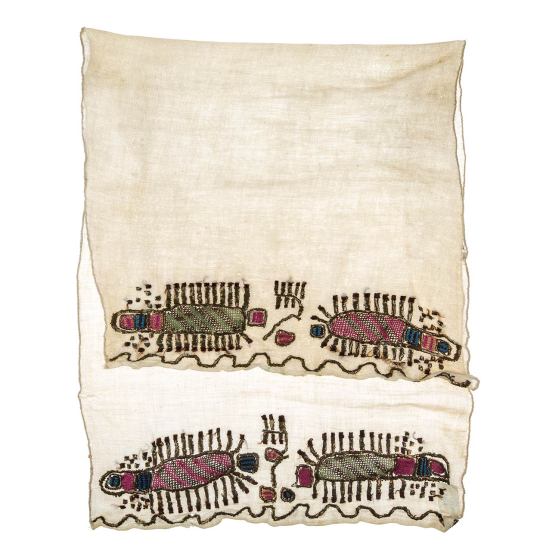
Decorative towel, with embroidered animal figures ("millipedes"). 19th century.
Sofia, Bulgaria.
Bulgarian National Museum of History
#bulgaria#19th century#eastern europe#household textiles#bulgarian#bulgarian national museum of history
171 notes
·
View notes
Text
Sofia: The Hidden Gem of the Balkans
Located in the heart of the Balkans and having hosted numerous civilizations throughout history, Sofia, the capital of Bulgaria, is a true paradise for travelers with its rich cultural heritage, historical landmarks, and breathtaking views. Here are some of the must-visit places in Sofia:
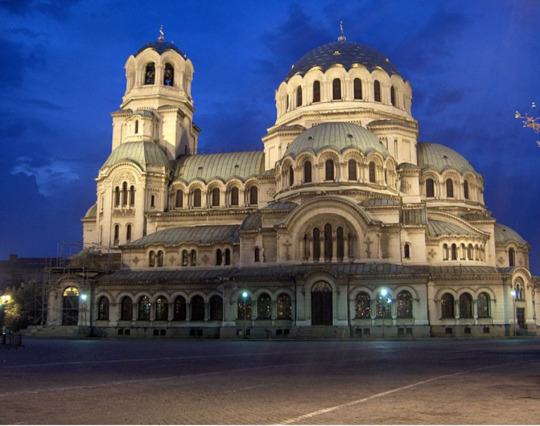
1. Alexander Nevsky Cathedral: One of the symbols of the city, this magnificent cathedral was designed by Russian architect Alexander Pomerantsev in the 19th century. Built in honor of Tsar Alexander Nevsky, a Bulgarian national hero, the cathedral enchants visitors with its architectural elegance and mosaic interior.


Icon of St. Eudokia
2. Boyana Church: Located just outside Sofia in the village of Boyana, these churches are included in the UNESCO World Heritage List for their frescoes dating back to the 10th and 13th centuries. With its historical and artistic significance, it's a fascinating destination to explore.
------------------------------------------------------------------------------

3. National Museum of History: Ideal for those who want to delve into Bulgaria's rich history in detail. The museum houses a wide range of historical collections spanning from ancient times to the Middle Ages, from the Ottoman period to the Bulgarian National Revival.
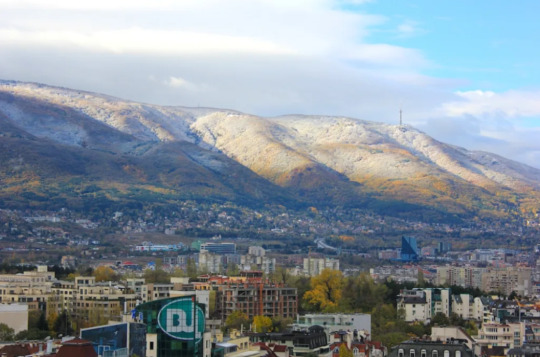
4. Vitosha Mountain: Vitosha Mountain, located near Sofia, is a wonderful escape for nature lovers. Throughout the year, it offers outdoor activities such as trekking, mountain biking, and skiing. The villages at the foot of the mountain are also interesting stops for travelers.
5. Roman Thermae: The ruins of the Roman Baths in the center of Sofia are an important relic from the ancient Roman period. Visitors can see the remains of ancient thermal baths and learn about life during the Roman era.
------------------------------------------------------------------------------
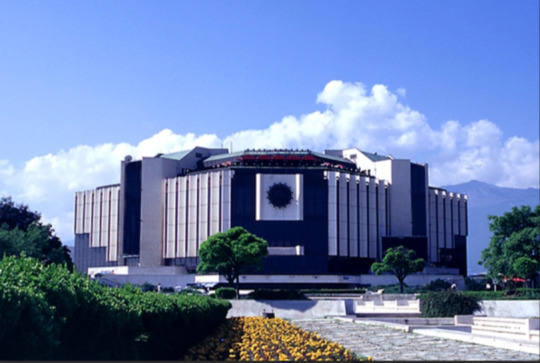
6. National Palace of Culture (NDK): The largest conference and exhibition center in Bulgaria, NDK stands out with its modern architecture and events. It is a popular venue for concerts, exhibitions, festivals, and other cultural events.
Sofia is a city filled with historical and cultural riches. The places listed above will help you explore the city's rich heritage during your visit.
2 notes
·
View notes
Text
A gathering of citizens in front of Plovdiv's Municipal Council building voiced their opposition on Wednesday to a controversial proposal suggesting the relocation of the "Alyosha" Monument to the Soviet Army. The initiative, put forth by municipal councilors Vladimir Slavenski and Yono Chepilski of "Democrats for Strong Bulgaria" (DSB), has sparked debate and raised questions about the preservation of historical monuments.
The proposal recommends dismantling the "Alyosha" Monument from its current location atop Bunardzhik Hill and transferring it to Sofia's Museum of Socialist Art by the end of 2024. The councilors argue that the move is a moral gesture honoring Bulgarian history, national dignity, and the victims of the communist regime. However, the suggestion has triggered conflicting responses within the Municipal Council.
Last week, the "There Is Such a People" (TISP) group proposed a local referendum on the monument's fate, adding another layer to the ongoing discussion. Protesters at the demonstration displayed signs with slogans such as "Those who have built nothing are destroying everything" and "You can't protect history with a referendum."
Several Members of Parliament from the Bulgarian Socialist Party (BSP), including Kristian Vigenin, Georgi Svilenski, Manol Genov, Ivan Petkov, and Ivan Chenchev, expressed their support for the protest. Chenchev emphasized that every monument deserves respect and a rightful place in history, advocating against attempts to rewrite history or engage in a war with memory and monuments.
The "Alyosha" Monument, a 10.5-meter granite statue unveiled in 1957, portrays a Soviet soldier holding a Shpagin submachine gun. Modeled after Russian soldier Aleksei Ivanovich Skourlatov, the monument stands as a historical symbol, and the proposed relocation has prompted a public outcry.
#nunyas news#why would you defend having that around#celebrating the people that put you under their heel#likely massacred a large number of innocents too#it'd be like a independent tibet keeping up a statue of mao
2 notes
·
View notes
Text

Embroidered chemise sleeve from Pernik region, Bulgaria. | Шевица от ръкав на женска риза, Пернишко (Граово).
(source: Bulgarian National History Museum)
5 notes
·
View notes
Photo






Cannon Retrieved from Bulgaria’s Black Sea
A rescue expedition just before Christmas, on December 23, salvaged two cannons and dozens of munitions of over 200 years from the seabed off the northern Bulgarian Black Sea coast. The team of the Centre for Underwater Archaeology (CUA), headed by Nayden Prahov, succeeded in the 30-hour operation despite the cold water, low visibility and complicated logistics.
The expedition was part of a long contemplated joint project with the National History Museum. Prahov found the guns during a dive in 2021, but it was only at the end of 2022 and thanks to support from the Ministry of Culture, that the shipwreck artefacts were retrieved and taken to the museum. The divers were also helped by the head of the Historical Museum in Kavarna, as well as Border Police staff.
It was literally at the end of December when the team went to the spot where they knew the shipwreck was, recorded the cannon again with photogrammetry and cameras and then recovered them from the seabed. That was done with a fishing boat with a crane with which the heavy cannon were lifted out of the water successfully, Prahov told BTA. He assumes that each weights over 350-400 kilos.
At the terrain archaeological reports organized by the National Archaeological Institute with Museum at the Bulgarian Academy of Sciences in the beginning of 2022, Prahov shared it was probably a matter of time for the cannon to be stolen and sold, as it has already happened with dozens of others along the northern Black Sea coast.
Divers told archaeologists of at least 80 such cases since the 1990s whose fate is unknown today, Prahov said then and added that the two by Kaliakra are among the few remaining.
Initial analysis dates the cannons at the end of the 18th – the beginning of the 19th century. They were part of the armament of a three-mast ship-of-the-line which sank in unknown circumstances north of Cape Kaliakra. The precise location of the shipwreck is confidential.
In addition to the underwater survey and recovery of the cannons from the bottom of the Black Sea, the tasks of the project include radiographic survey and conservation of the shipwreck remains at the National History Museum’s Central Laboratory for Conservation and Restoration.
The cannons and the other items from the ships inventory will be exhibited in the museum’s lapidarium in 2023, thus expanding the collection. The national museum already has the largest collection of anchors and stocks in the country. The latest maritime artefacts mark the beginning of a collection of West European, Russian and Turkish ship armaments found at the bottom of the Black Sea.
#Cannon Retrieved from Bulgaria’s Black Sea#ship#shipwreck#ancient weapons#ancient artifacts#archeology#archeolgst#history#history news#ancient history#ancient culture#ancient civilizations
7 notes
·
View notes
Photo

The medieval Bulgarian culture
But the medieval Bulgarian culture was first and foremost a folk culture. Fresh creative forces were preserved among the people which, despite the most unfavourable conditions, continued to manifest their life in the forms which the new conditions permitted. The ardent creative fire died down, but there were enough embers left for the fire of Bulgarian creative genius to blaze up again 500 years later.
Memories of the people’s past were kept alive in the monasteries. Far from the great highways, usually tucked away in the gorges of inaccessible mountains, they preserved many Bulgarian books, and ancient works were copied and spread wide from here. Some of the finest examples of medieval Bulgarian art were preserved in these monasteries. And lastly new iconographers continued to be taught here, keeping alive the traditions of their predecessors. Iconography developed to a great extent in this period. Together with it, wood carving was given an impetus, and the goldsmiths created beautiful and original ornaments for clothing.
The copper and silver articles, mainly for the needs of the church, such as vessels, crosses, clasps and so on for bibles, are distinguished by their extremely fine workmanship. Finally, in the field of weaving and handicrafts, the Bulgarian decorative artist, that is the whole Bulgarian people, created such fine patterns, such decorative motifs as amaze one to this day by their colour scheme city tour istanbul, composition and fine craftsmanship.
Bulgarians were forbidden
The only branch of art which decayed greatly was architecture. In the first centuries of bondage the Bulgarians were forbidden to build churches or any kind of monumental building whatever. Only some of the notables, descendants of the old bolyar families who had survived, were able to build a small church or monastery here and there, and have it decorated with murals. When the Bulgarians were later once again allowed to build their own churches, the new Christian churches had to be small insignificant buildings, buried deep down in the earth, so as not to irritate the religious feelings of the «orthodox» believers. In full contrast to the small Christian churches huge mosques were now built by the Mohammedans, as well as Caravanserais, and konaks, as the governor’s residences or palaces were called.
But those who constructed these Ottoman buildings were again Bulgarian master- builders, who handed down from generation to generation the old feeling of the Bulgarian blinder for the monumental. And thanks to this when, in the 19th century, the hour of their National Revival struck for the long-suffering Bulgarian people, and new and more favourable conditions prevailed for building, the first big Bulgarian self-taught architects appeared out of the blue, men like Kolyu Ficheto, who created the first works of modern Bulgarian monumental architecture.
Bulgaria is indeed a country with an eventful history and many ancient and varied monuments. The Bulgarian people found a rich cultural and artistic heritage in the lands in which they settled 13 centuries ago. In the course of over one thousand years they created heir own original art, enriching the treasurehouse of mankind’s culture by many works of art. Much has been destroyed, by time and by the enemies of the Bulgarian people as well. But much has also remained, for the preservation of which the Bulgarian state does a great deal.
The numerous museums which have been founded of recent years in different towns of the Republic, wherever large scale excavation is in progress, have turned into real treasure-houses of archaeological, historical and artisticmonuments. But how many buried cities, how many rich treasures and valuable material still lie hidden in the Bulgarian land! In Bulgaria people in all walks of life take an unusual interest in the past of their country. The Bulgarian people highly value and preserve their monuments of the past. They also value and admire the monuments of all other peoples.
2 notes
·
View notes
Photo

Contributions from Key Figures
Karel Shkorpil’s Educational Endeavors (1891-1894)
During his tenure as a teacher at the High School for Boys in Turnovo from 1891 to 1894, Karel Shkorpil made significant strides in unraveling the history of Turnovo. He meticulously crafted plans and penned detailed descriptions, culminating in a comprehensive report titled “The Monuments in Turnovo and a Project for Excavations of the Old Bulgarian Capital,” which he presented to Tsar Ferdinand in 1893. Accompanying this report were 37 volumes containing plans, photographs, drawings, and sketches. In 1910, Shkorpil’s work was published as a seminal study titled “A Plan of the Old Bulgarian Capital Turnovo.”
George Sior’s French Expedition (1900)
In 1900, French archaeologist George Sior embarked on a significant expedition commissioned by Tsar Ferdinand. His excavations on Trapezitca yielded the discovery of an impressive 14 churches. Notably, his exploration of Tsarevets, particularly Chan Tepe (The Bell Hill), led to the uncovering of The Church of the Patriarch.
Ministry of Education’s Artistic Commission (1903-1904)
In 1903-1904, the Ministry of Education commissioned renowned reproduction artist V. Dimov from the National Museum to replicate the frescoes found in the newly discovered churches in Trapezitca Private Tours Istanbul. Dimov not only produced faithful reproductions but also meticulously drafted plans of the churches. His extensive study was published in 1915, shedding further light on Turnovo’s architectural and artistic heritage.
Revival of Archaeological Society (1905)
In 1905, the archaeological society resumed its activities. Under the guidance of M. Moskov, significant efforts were made, including the clearance of sections of the palace building in Tsarevets, excavation of the Well east of “The Church of the Patriarch,” and investigation of the tower-well on the left bank of the Yantra river, near the so-called Balduinova Kula (tower). Subsequent excavations conducted by Moskov in 1906 focused on two noteworthy Turnovo churches: “Sveti Dimitur” and “Sveti Chetiredesete Muchenici” (Saint of Forty Martyrs), with findings published in 1912.
The First Archaeological Conference (1910)
On June 6-8, 1910, the Turnovo archaeological society organized the First Archaeological Conference of the Society in Bulgaria. Despite the significant damage caused by an earthquake on June 1, 1913, which affected many of Turnovo’s monuments, archaeological excavations persisted.
Restoration and Exploration Initiatives (1930s-1959)
In the 1930s, the first restoration efforts of the old capital began under the initiative of the Ministry of Public Works and the Turnovo Council. In 1946, exploration of “The King Palace” (Tzarskia Dvorets) commenced. Notably, from 1958 to 1959, the study of the fortress walls established the cultural stratification layers for the first time, providing invaluable insights into Turnovo’s historical evolution.
0 notes
Photo

Contributions from Key Figures
Karel Shkorpil’s Educational Endeavors (1891-1894)
During his tenure as a teacher at the High School for Boys in Turnovo from 1891 to 1894, Karel Shkorpil made significant strides in unraveling the history of Turnovo. He meticulously crafted plans and penned detailed descriptions, culminating in a comprehensive report titled “The Monuments in Turnovo and a Project for Excavations of the Old Bulgarian Capital,” which he presented to Tsar Ferdinand in 1893. Accompanying this report were 37 volumes containing plans, photographs, drawings, and sketches. In 1910, Shkorpil’s work was published as a seminal study titled “A Plan of the Old Bulgarian Capital Turnovo.”
George Sior’s French Expedition (1900)
In 1900, French archaeologist George Sior embarked on a significant expedition commissioned by Tsar Ferdinand. His excavations on Trapezitca yielded the discovery of an impressive 14 churches. Notably, his exploration of Tsarevets, particularly Chan Tepe (The Bell Hill), led to the uncovering of The Church of the Patriarch.
Ministry of Education’s Artistic Commission (1903-1904)
In 1903-1904, the Ministry of Education commissioned renowned reproduction artist V. Dimov from the National Museum to replicate the frescoes found in the newly discovered churches in Trapezitca Private Tours Istanbul. Dimov not only produced faithful reproductions but also meticulously drafted plans of the churches. His extensive study was published in 1915, shedding further light on Turnovo’s architectural and artistic heritage.
Revival of Archaeological Society (1905)
In 1905, the archaeological society resumed its activities. Under the guidance of M. Moskov, significant efforts were made, including the clearance of sections of the palace building in Tsarevets, excavation of the Well east of “The Church of the Patriarch,” and investigation of the tower-well on the left bank of the Yantra river, near the so-called Balduinova Kula (tower). Subsequent excavations conducted by Moskov in 1906 focused on two noteworthy Turnovo churches: “Sveti Dimitur” and “Sveti Chetiredesete Muchenici” (Saint of Forty Martyrs), with findings published in 1912.
The First Archaeological Conference (1910)
On June 6-8, 1910, the Turnovo archaeological society organized the First Archaeological Conference of the Society in Bulgaria. Despite the significant damage caused by an earthquake on June 1, 1913, which affected many of Turnovo’s monuments, archaeological excavations persisted.
Restoration and Exploration Initiatives (1930s-1959)
In the 1930s, the first restoration efforts of the old capital began under the initiative of the Ministry of Public Works and the Turnovo Council. In 1946, exploration of “The King Palace” (Tzarskia Dvorets) commenced. Notably, from 1958 to 1959, the study of the fortress walls established the cultural stratification layers for the first time, providing invaluable insights into Turnovo’s historical evolution.
0 notes
Text
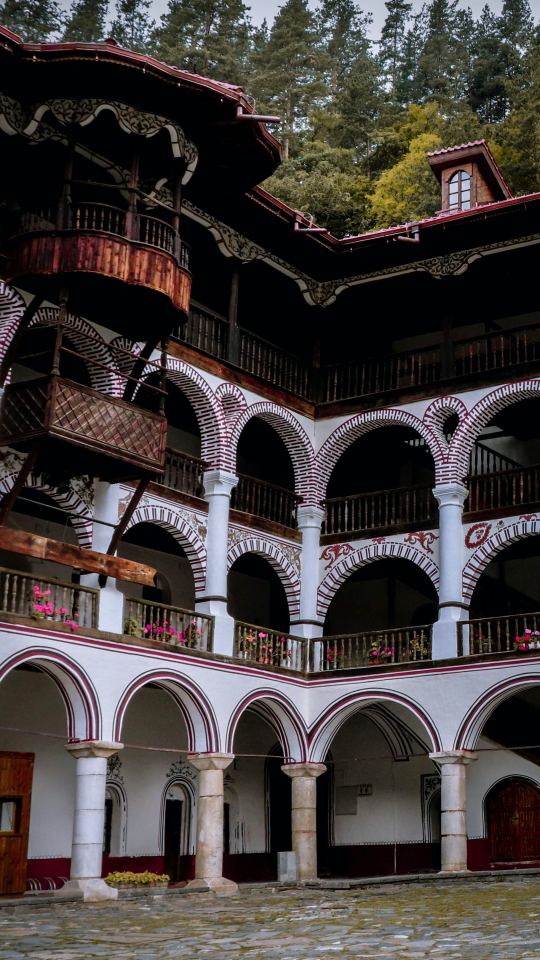
Exploring Bulgaria's Rila Monastery
Nestled amidst the serene Rila Mountains in Bulgaria lies a cultural gem steeped in history and spirituality—the Rila Monastery. Embarking on a road trip to this UNESCO World Heritage Site promises not only a scenic drive but also an enriching encounter with centuries-old architecture and a chance to delve into Bulgaria's rich heritage.
The road trip to Rila Monastery is an adventure in itself. Leaving behind the hustle and bustle of Sofia, the capital city, the journey unveils picturesque landscapes and winding roads that lead to the tranquil embrace of the mountains. As the car winds its way through the Rila National Park, travelers are treated to breathtaking vistas of lush forests, meandering rivers, and towering peaks that paint a stunning backdrop for the adventure ahead.
Upon arrival, the sight of the Rila Monastery is nothing short of awe-inspiring. The monastery, with its striking architecture adorned with colorful frescoes, stands as a testament to Bulgaria's rich cultural heritage. Stepping onto the grounds feels like stepping back in time, as the monastery dates back to the 10th century and exudes an aura of spirituality and tranquility.
A visit to the monastery offers a chance to explore its rich history and architectural marvels. The main church, adorned with vibrant frescoes depicting religious scenes, showcases the exquisite craftsmanship of Bulgarian artists from centuries past. The intricate wood-carved iconostasis stands as a testament to the devotion and artistry of the monks who once called this place home.
Wandering through the monastery's courtyard, visitors can discover the quaint museum that houses a collection of priceless religious artifacts, manuscripts, and icons that offer a glimpse into Bulgaria's religious and cultural heritage.
No visit to Rila Monastery is complete without exploring the array of souvenirs available. The monastery's shops offer a treasure trove of handcrafted items that make for perfect mementos of the journey. From intricately painted icons and traditional Bulgarian pottery to locally made honey and herbal teas, the selection is a testament to Bulgaria's craftsmanship and traditions.
Purchasing souvenirs from the monastery not only supports local artisans but also allows visitors to take home a piece of Bulgaria's cultural legacy. Each item tells a story, preserving the essence of Bulgarian heritage and making for cherished keepsakes that carry the spirit of Rila Monastery.
A visit to Rila Monastery isn't just a trip; it's an immersive experience that connects travelers with Bulgaria's rich history, spiritual legacy, and natural beauty. From the tranquility of the mountains to the cultural richness within the monastery's walls, every moment spent here is a testament to the wonders of exploration and discovery.
1 note
·
View note
Text
Events 11.10 (after 1950)
1951 – With the rollout of the North American Numbering Plan, direct-dial coast-to-coast telephone service begins in the United States.
1954 – U.S. President Dwight D. Eisenhower dedicates the USMC War Memorial (Iwo Jima memorial) in Arlington Ridge Park in Arlington County, Virginia.
1958 – The Hope Diamond is donated to the Smithsonian Institution by New York diamond merchant Harry Winston.
1969 – National Educational Television (the predecessor to the Public Broadcasting Service) in the United States debuts Sesame Street.
1970 – Vietnam War: Vietnamization: For the first time in five years, an entire week ends with no reports of American combat fatalities in Southeast Asia.
1970 – Luna 17: uncrewed space mission launched by the Soviet Union.
1971 – In Cambodia, Khmer Rouge forces attack the city of Phnom Penh and its airport, killing 44, wounding at least 30 and damaging nine aircraft.
1971 – A Merpati Nusantara Airlines Vickers Viscount crashes into the Indian Ocean near Padang, West Sumatra, Indonesia, killing all 69 people on board.
1972 – Southern Airways Flight 49 from Birmingham, Alabama is hijacked and, at one point, is threatened with crashing into the nuclear installation at the Oak Ridge National Laboratory. After two days, the plane lands in Havana, Cuba, where the hijackers are jailed by Fidel Castro.
1975 – The 729-foot-long freighter SS Edmund Fitzgerald sinks during a storm on Lake Superior, killing all 29 crew on board.
1975 – Israeli-Palestinian conflict: the United Nations General Assembly passes Resolution 3379, determining that Zionism is a form of racism.
1979 – A 106-car Canadian Pacific freight train carrying explosive and poisonous chemicals from Windsor, Ontario, Canada derails in Mississauga, Ontario.
1983 – Bill Gates introduces Windows 1.0.
1985 – A Dassault Falcon 50 and a Piper PA-28 Cherokee collide in mid-air over Fairview, New Jersey, killing six people and injuring eight.
1989 – Longtime Bulgarian leader Todor Zhivkov is removed from office and replaced by Petar Mladenov.
1989 – Germans begin to tear down the Berlin Wall.
1995 – In Nigeria, playwright and environmental activist Ken Saro-Wiwa, along with eight others from the Movement for the Survival of the Ogoni People (Mosop), are hanged by government forces.
1997 – WorldCom and MCI Communications announce a $37 billion merger (the largest merger in US history at the time).
2002 – Veteran's Day Weekend Tornado Outbreak: A tornado outbreak stretching from Northern Ohio to the Gulf Coast, one of the largest outbreaks recorded in November.
2006 – Sri Lankan Tamil politician Nadarajah Raviraj is assassinated in Colombo.
2006 – The National Museum of the Marine Corps in Quantico, Virginia is opened and dedicated by U.S. President George W. Bush, who announces that Marine Corporal Jason Dunham will posthumously receive the Medal of Honor.
2008 – Over five months after landing on Mars, NASA declares the Phoenix mission concluded after communications with the lander were lost.
2009 – Ships of the South and North Korean navies skirmish off Daecheong Island in the Yellow Sea.
2019 – President of Bolivia Evo Morales and several of his government resign after 19 days of civil protests and a recommendation from the military.
2020 – Armenia and Azerbaijan sign a ceasefire agreement, ending the Second Nagorno-Karabakh War, and prompting protests in Armenia.
0 notes
Text

Wedding towel. Woven with cotton and silk thread. Early 20th century.
Katselovo, Ruse municipality.
Bulgarian National Museum of History
#bulgaria#eastern europe#bulgarian#early 20th century#household textiles#ruse#bulgarian national museum of history
85 notes
·
View notes
Text
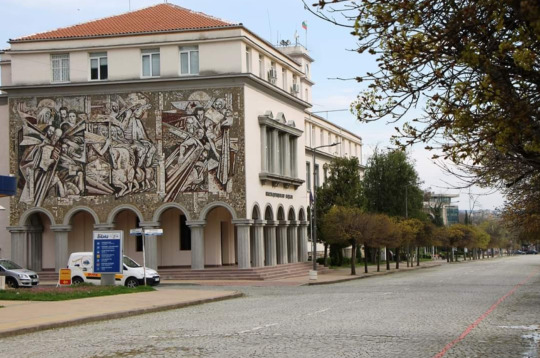
Places to Visit in Bulgaria
Bulgaria, situated in Southeast Europe, is a country rich in natural beauty, historical sites, and cultural heritage. From stunning landscapes to ancient ruins, Bulgaria offers a diverse range of attractions for travelers to explore. Here are some must-visit places in Bulgaria:
Sofia: The capital city of Bulgaria, Sofia, is a vibrant metropolis blending history and modernity. Visitors can explore iconic landmarks such as the Alexander Nevsky Cathedral, the National History Museum, and the ancient Serdica archaeological complex.
Plovdiv: As one of the oldest continuously inhabited cities in Europe, Plovdiv boasts a wealth of historical and architectural treasures. Highlights include the well-preserved Roman amphitheater, the Old Town with its colorful houses, and the Ethnographic Museum showcasing Bulgarian culture.
Veliko Tarnovo: Known as the "City of the Tsars," Veliko Tarnovo is famous for its medieval fortress, Tsarevets, perched on a hill overlooking the Yantra River. Visitors can explore the historic Old Town, visit the Patriarchal Cathedral, and enjoy panoramic views of the city.
Rila Monastery: Nestled in the scenic Rila Mountains, Rila Monastery is a UNESCO World Heritage Site and one of Bulgaria's most significant religious landmarks. The monastery complex features exquisite frescoes, a museum, and a peaceful atmosphere ideal for reflection.
Nesebar: Located on the Black Sea coast, Nesebar is an ancient town known for its well-preserved medieval architecture and UNESCO-listed Old Town. Visitors can wander through narrow cobblestone streets, admire Byzantine churches, and relax on sandy beaches.
Buzludzha Monument: This imposing Soviet-era monument, perched atop the Buzludzha Peak in the Balkan Mountains, is a testament to Bulgaria's communist past. While the interior is now abandoned and in disrepair, the monument remains a striking symbol of Bulgaria's history.
Rila Mountains: Outdoor enthusiasts will delight in exploring the rugged beauty of the Rila Mountains. The area offers excellent hiking opportunities, with trails leading to pristine lakes, waterfalls, and panoramic viewpoints.
These are just a few of the many incredible destinations Bulgaria has to offer. Whether you're interested in history, nature, or culture, Bulgaria has something to captivate every traveler.
2 notes
·
View notes
Text
ARCHAEOLOGISTS FROM THE NATIONAL HISTORICAL MUSEUM REVEAL THE SECRETS OF THE MYSTICAL MONASTERY “ST. JOHN PRODROMOS” IN ACHTOPOL
For the third year in a row, a team of the National History Museum, under the leadership of the director of the museum - Associate Professor Bonni Petrunova, started the archaeological research of the medieval monastery "St. John Prodromos", Ahtopol.
Archaeologists from NHM continue to reveal the secrets of the mysterious monastery, the alleged refuge of the Metropolitan of Agathopolis, and last year two graves dug into the rock were discovered in the nave of the church, in which, in all probability, deceased metropolitans were buried. According to Associate Professor Petrunova, "this once powerful monastery was often damaged and destroyed in the past, which makes it quite a challenge in terms of research. A similar finding is also confirmed by the cannonballs found on the site, dating from the Cossack attacks in the 16th - 17th centuries. , described in an anonymous note from a liturgical book: ‘In 1623, Cossacks with seventeen Seagulls ravaged the city of Agathopolis... They tied up the monks of the monastery, took them and went to Sozopol...’ We hope that the excavations will reveal new evidence of the important historical role of the city of Ahtopol over the centuries, and this will also give an opportunity to reveal details related to the architecture and layout of the monastery, as well as the daily life of its inhabitants".
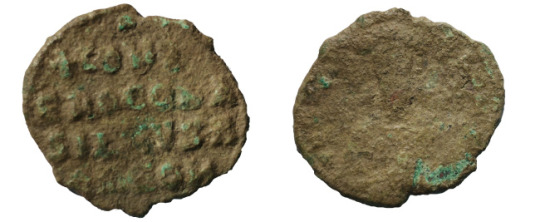
In just the first few days of this year's excavations, interesting cultural treasures have already been uncovered, such as a coin of the Byzantine emperor Leo VI (886-912). Leo VI the Philosopher (or the Wise) is known to be the one who forced Simeon I the Great to break the 30-year peace imposed by Boris I Michael. The same, under the pressure of his mistress Zoya Zautzena and her father Stylian Zautza, Leo VI moved the marketplace for Bulgarian goods from Constantinople to Thessaloniki and imposed heavy taxes on them, and then ignored the envoys of Simeon I (Rashev, 2007), as in the summer in 896, Simeon I undertook his first march to Constantinople, as a result of which Bulgaria received territories between the Black Sea and Strandzha from Byzantium (Zlatarski 1994).
7 notes
·
View notes
Text



Handwoven Bulgarian kilim rugs with floral, zoomorphic and geometric motifs. Mid to late 19th century. | Ръчно тъкани килими със зооморфна, растителна и геометрична орнаментика. Средата – края на 19-ти век. I – Пиротски; II – Котленски; III – килимено чердже.
(source: Bulgarian National History Museum)
3 notes
·
View notes
Text
Why You Need To Visit Sofia, Bulgaria

Sofia might appear to be a drab city from afar However, that doesn't mean it's not worthwhile to visit. In fact, despite its communist-era architecture, Sofia's a bustling metropolis that will charm and surprise even the most disinterested travelers.
A visit to Sofia isn't just about seeing the sights. It's about getting to know its people and understanding Bulgaria's fascinating history. Here are a few of our top reasons why you should add Sofia to your next Eastern Europe travel!
1. It is a walking town
If you're looking for a place in which you can move around without the need to take the metro system, Sofia is where you should be. Although it's not as walkable as other European capitals, it's simple to navigate. You may get more information on trip by visiting Sofia places to visit site.
Although the majority of the attractions of the city are stunning churches however, there are some worthwhile museums worth exploring. The National Palace of Culture is especially worth a visit, since it features quality local work.
Take a hike up Vitosha Mountain for something different. It's one of the most awe-inspiring mountains in Sofia. It offers stunning views of the city, and also get to see some amazing nature.
2. It's a fantastic location to shop
Sofia is a mecca for shopping with high-end chain stores as well as independent boutiques that sell unique Bulgarian brands. Vitosha Boulevard, Ulitsa Graf Ignatiev and Vitosha Boulevard are the city's main pedestrian zones. Boutiques selling unique items can be found in smaller streets such as Shipka, Oborishte and San Stefano.
If you are looking for authentic souvenirs of Bulgaria, there are many markets to choose from in the region. Vasil Levski Square is home to stalls that sell martenitsa, traditional bracelets made from white and red yarn which are worn in spring as a symbol of love, health and prosperity.
You will also find markets at Ploshtad Slovejkov, just outside the National Theatre. This is a good spot to buy books in Bulgarian and English or second-hand novels, and antiques.
3. It's a fantastic spot to eat
With its mix of cosmopolitan influence and international appeal, Sofia offers an abundance of cafes and restaurants. There's plenty to satisfy everyone, whether you want a quick breakfast or a relaxed lunch with Bulgarian food and wine.
Get your day started in the city by enjoying breakfast of mekitsa. It's a classic Bulgarian pastry made with butter, and filled with either meat or other vegetables. This classic breakfast is easy to enjoy at any time of the evening or day. It's beneficial for those who follow a gluten-free diet or who are vegan.
4. It's a fantastic place to celebrate
If you're a party animal or hipster, or DJ, Sofia has plenty of bars and clubs that will keep you dancing all the night. From trendy basement clubs to big DJ sets in abandoned warehouses, there's plenty to please all in Sofia, the capital of Bulgaria.
5L Speakeasy Bar is a fantastic place to begin your night. The bar is full of lot of energy and offers an amazing variety of drinks. The bar's expert bartenders whip up classics and innovative cocktails using top-quality ingredients.
5. It's an amazing location to unwind
There are plenty of places in Sofia to relax and enjoy the outdoors. You can bring an afternoon picnic to a park or go hiking to the top of Vitosha Mountain, which is higher than 2000m above sea level.
It's a walkable city so most of the main attractions are easily accessible on walking. The main pedestrian road is lined with cafes and restaurants so it's perfect for sitting back and people watching.
If you're on a budget it's worth checking out some of the fantastic hostels located in the city. They're typically affordable, have an array of accommodations and are also a great way to connect with fellow travellers from around the globe!
1 note
·
View note
Text
7 Travel Tips You Should Learn Before You Go To Sofia

This article is important If you're planning to visit Sofia. The following seven suggestions will help make your trip more enjoyable and easier. We've got everything you'll should know about how to get around the city. So what are you sitting for? Get started planning your next trip today!
1. Study the Local Language
Whatever you do, knowing a few words in the local language is always useful. That means you'll have to master Bulgarian in Sofia. It's not as difficult as it sounds! You'll soon be able to master the basics with some practice. Your effort will be appreciated by the locals.
"Edno" Bulgarian School
The Edno Bulgarian School is the best location to study Bulgarian. This highly-rated school provides a range of classes for all levels, from beginner to advanced. You can also get individual tuition so that you can study at your own pace. The school is situated in Sofia's downtown and makes it easy to put the new knowledge into practice immediately.
2. Explore the City.
After you've arrived in Sofia, it is time to master the art of navigating the city. It's relatively small and easy for visitors to navigate. The most efficient method of getting around is to walk or by public transportation.
Comfortable shoes and clothing are essential for anyone who is planning to walk lot. Be careful on the pavements, as they could be uneven.
Sofia has an extensive tram and bus systems for public transportation that spans the entire city. Tickets are available at the kiosks at each stop. A city pass is a great option if you intend to use public transport often. You'll be able to have unlimited access to the bus and tram system for a certain time. To learn extra information about travel, you have to browse Sofia places to visit site.
3. You can eat and drink like a local.
Traveling is all about experiencing new cuisines. Sofia provides numerous opportunities to taste new cuisines. The city is known for its hearty and delicious food. From traditional Bulgarian cuisine to international dishes There's something for everyone to enjoy.
If you're looking to have a truly authentic experience, you need to sample some local dishes. Banitsa, which is a type of pastry and kavarma (stew), or shopska salata (a vegetable dish) are among the most well-known foods. Don't forget to try the well-known Bulgarian yogurt to get something sweeter. It's delicious!
4. See the sights.
Sofia is home to numerous gorgeous and historic sites. There are many places to see, from ancient churches to modern-day museums.
A few of the most popular attractions include the Alexander Nevsky Cathedral, the Boyana Church, and the National History Museum. If you're seeking something a more unique, visit the Cyrillic Alphabet Monument. This distinctive monument is dedicated to Bulgaria's alphabet and is a great photograph occasion.
5. Shop till you drop.
If you love to shop and shop, you'll be delighted in Sofia. The city has many boutiques and shopping centers. You can find everything from designer clothes to souvenirs made locally.
For a truly unique shopping experience, be sure to visit the Central Market Hall. This market that is a historical landmark is in the heart of Sofia and provides freshly-picked produce, spice and traditional Bulgarian food.
6. Have Fun!
Sofia is an excellent city to enjoy nightlife and entertainment. There are numerous bars or clubs, restaurants and other entertainment options. Sofia is a great place to find everything you require to have a drink with friends or dance the night away.
One of the great things about the nightlife in the city is that it's relatively affordable. There are numerous clubs and bars that won't make you spend a fortune. So go out and have some fun!
7. Coworking is an ideal place to work.
Coworking is the best option for offices that are private in Sofia. Coworking is a fantastic way for you to do work and enjoy the best of Sofia. It is centrally located and has low costs, coworking is the perfect solution for digital nomads and remote workers.
Conclusion
There you have it! These are just some of the numerous things you have to be aware of prior to coming to Sofia. These tips will help ensure that you will have a great time in the city of love.
0 notes